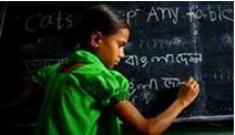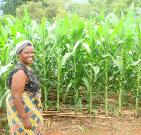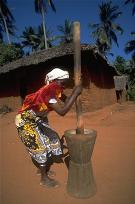Putiajani village, Bangladesh
In July, partners Michael Chew (Australia/Bangladesh), Sabrin Sultana (Bangladesh), and Elijah Mujuri (Kenya) began developing a project that addresses the challenges villagers face from deforestation through Concern Universal Bangladesh.
The Concern’s main project goal was to ‘Effectively integrate community based climate change adaptation and community managed disaster risk reduction in the socio-economic development process of local peoples.
| Women mapping out community challenges with a problem tree |
|
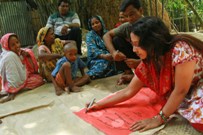 |
One Village, Putiajani village had not had any DRR/CC assessments or interventions. We therefore choose this as our sample community,. We attended the village on 3 August, and convened at meeting with 14 people – 12 females and 2 males. |
There was a collective brainstorm regarding hazards facing the village, and then each person was able to vote on the list with 10 seeds. In analyzing the community’s needs assessment we wrote the following problem statement:
1245 people of the village of Putiajani in the Manikganj district of Bangladesh are frequently affected by flooding and river erosion caused by the cutting of trees, Unsustainable Agricultural Practices, Climate variability and Sea level rise. These challenges have a negative impact on homesteads, livelihoods, crop yields, arable farmland and transportation routes, human and livestock health and an increase in river sedimentation. Flood waters become contaminated with sewer water causing an outbreak of diarrheal diseases, and an influx of mosquitoes—and also interfere with potable water sources and transport within.
| Women voting during needs assessment |
|
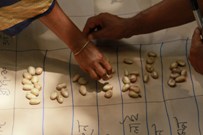 |
After thoroughly researching potential project activities we developed a simple, preliminary draft of a project outline which includes a Participatory Community Afforestation Program: |
[Problem 2]. River erosion
Participatory Community Afforestation Program [Solution to underlying causes: cutting of trees and river sedimentation and sea level rise]:
[Activity 1]. Workshop and follow-up in participatory community afforestation and agro-forestry training and support
[Activity 2]. Forming groups for establishment and management of tree nurseries, tree species selection, planting seeds workshop and follow-up
[Activity 3]. Planting trees along the riparian zones, catchment rehabilitation, protection and conservation
| Women listening to vote tally |
|
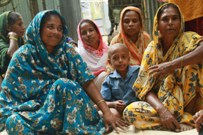 |
There is also a sustainable agriculture program that works hand-in-hand witht e afforestation program: |
[Problem 1]. Flood
Sustainable Agriculture Program [Solution to underlying cause: unsustainable agricultural practices]:
[Activity 1]. Training on conservation agriculture
[Activity 2]. Soil and water conservation training and follow up – in farms and along river catchment area/river ecosystem
[Activity 3]. Riparian/riverbanks reforestation and soil stabilization, dykes construction and rehabilitation
Download their report and project outline here:
Solution Oriented Project Outline.
Would you like to learn how to develop Community Based Adaptation Projects?
Please write us with your stories, thoughts and comments through Online.Learning@csd-i.org

